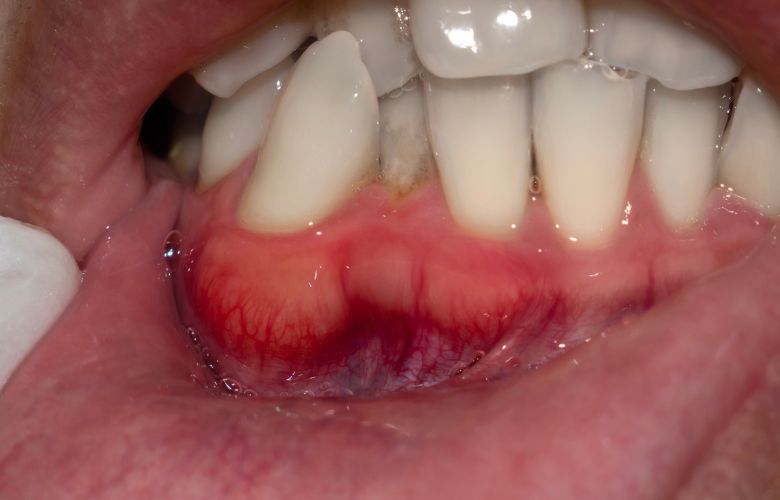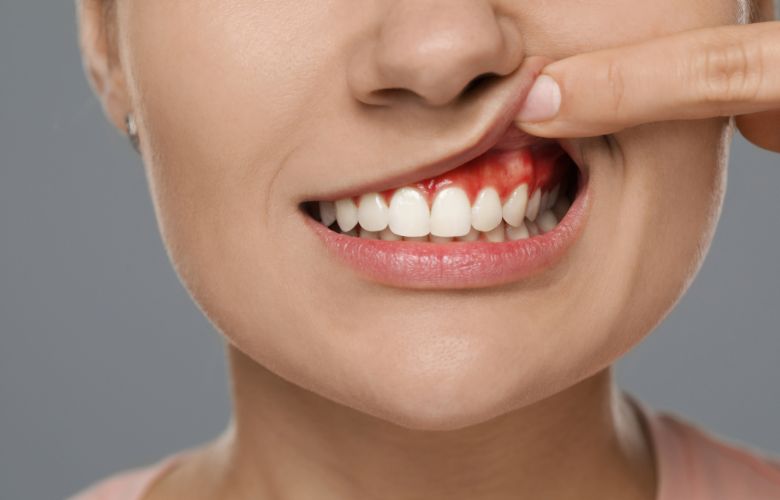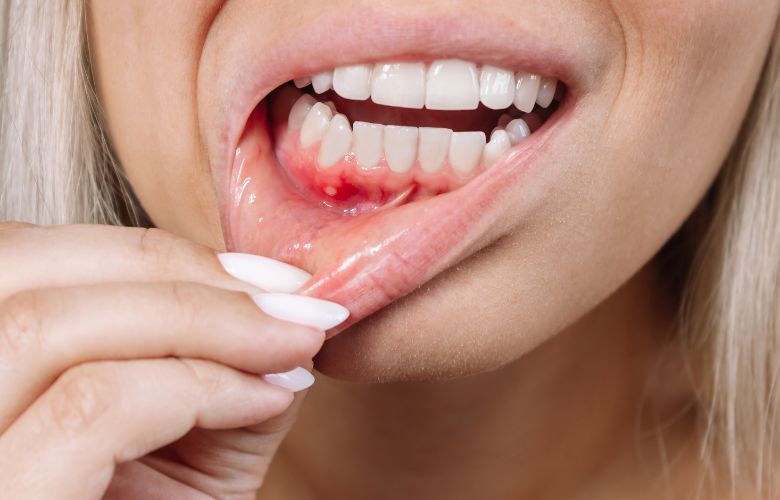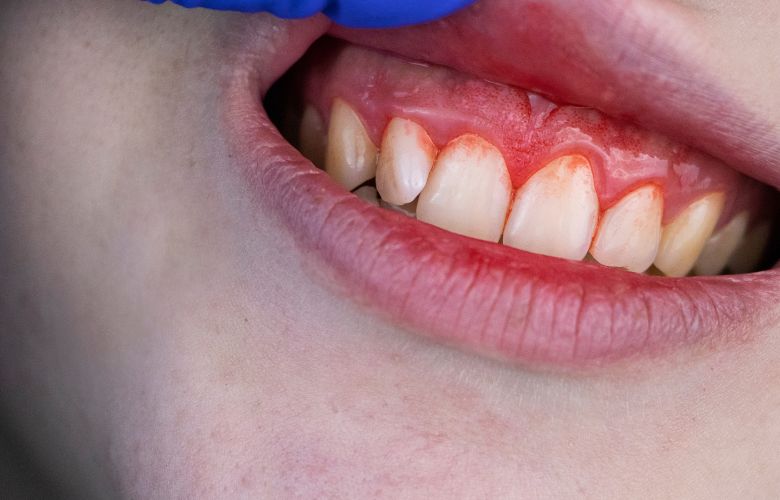Experiencing bleeding from the gums after a temporary crown placement can be unsettling.Temporary crowns are an integral part of dental restoration procedures, providing protectionand shaping for your tooth as it awaits the permanent dental crown. While some discomfortis expected, it’s important to understand the difference between normal post-procedural symptoms and signs that may warrant further attention from your dentist.
In this post, we unravel the common causes of gum bleeding, share essential precautions totake, and outline what you can typically expect during the healing process.
Common Causes of Gums Bleeding with Temporary Crowns

Several factors can trigger bleeding around the gums after a temporary crown has beenfitted:
Inflammation and Irritation from the Temporary Crown
The process of fitting a crown can irritate your gums, leading to mild inflammation. Yourmouth isn’t used to foreign materials, and even a well-fitted crown can initially rub againstyour gums.
Poor Oral Hygiene
Failing to maintain good oral hygiene, especially after dental procedures, can lead to plaquebuildup around the temporary crown. Plaque can irritate the gums and cause bleeding.
Pre-existing Gum Disease
If there is already underlying gum disease, such as gingivitis or periodontitis, this canexacerbate post-procedure bleeding.
Other potential causes of bleeding following a temporary crown fitting include:
- Aggressive Brushing or Flossing: Sometimes the bleeding might be a result ofapplying too much force when brushing or flossing near the temporary crown, leadingto gum trauma.
- Reaction to Dental Cement: Certain individuals may have a sensitivity or allergicreaction to the dental cement used to place the temporary crown, which can causegum irritation and bleeding.
- Improper Crown Fit or Placement: If the temporary crown doesn’t fit correctly, itcan put undue pressure on the gums, leading to inflammation and bleeding.
- Dental Procedure Trauma: The procedure itself might cause minor injury to thesurrounding gum tissue, which can manifest as bleeding post-treatment.
- Blood Thinners or Medications: Patients on blood thinners or specific medicationsmay experience increased bleeding due to changes in blood clotting.
- Nutritional Deficiencies: Deficiencies in vitamins, particularly vitamins C and K,can weaken gums and make them more prone to bleeding.
Normal Reactions vs Concerning Symptoms

Some bleeding after temporary crown placement is not uncommon and should resolve withina few days. When bleeding persists beyond this period, is heavy, or comes with othersymptoms like pain or swelling, professional advice should be sought.
Precautions to Take
To manage temporary crown discomfort and prevent excess bleeding, consider the followingprecautions:
Gentle Brushing and Flossing Techniques
Use soft bristles and brush gently along the gum line toavoid aggravating the area. Becautious with flossing to not disturb the edges of the temporary crown.
Avoiding Hard or Sticky Foods
Chewing hard or sticky substances can dislodge or put pressure on the temporary crown,causing more irritation and bleeding.
Using a Saltwater Rinse
A gentle rinse with warm salt water can soothe irritated gums and act as a mild antiseptic.
Seeking Professional Advice if Bleeding PersistsIf
You notice continuous bleeding, signs of infection, or any significant discomfort, contact your dentist.
What to Expect
Following a temporary crown placement, the goal is for your gums to heal and the inflammation to subside before the permanent crown installation.
Normal Healing Process
Mild irritation and slight bleeding are typically part of the natural healing process. This shouldgradually improve over a few days.
Duration of Bleeding
Bleeding should be minimal and cease within 2-3 days after the crown placement.
Signs of Complications and When to Seek Help

Look out for persistent pain,throbbing, or a fever, which could indicate an infection.
As with all dental treatments, the length of time it can take to heal and the pain experienced will vary from patient to patient. If you are experiencing severe discomfort and bleeding,don’t wait. Get in touch with your dentist and they will be able to advise whether you need to come back for a follow-up.
When to Seek Professional Help
- Consult your dentist ifyou experience:
- Heavy or prolonged bleeding
- Increasing pain or swelling
- Signs of an allergic reaction to the materials
- The temporary crown feels loose or falls out
Bleeding of the gums is perfectly normal following a temporary crown treatment so don’t let this put you off the treatment. Crowns are an important part of caring for your teeth,especially as you get older and they are a common treatment in dental practices throughout the world.
Conclusion
Caring for your gums after temporary crown placement is crucial for overall oral health.Awareness of typical responses and signs of complications will help ensure a smoothtransition to your final crown. Always follow your dentist’s specific recommendations and report any concerning symptoms promptly.
FAQs
Yes, some minor bleeding following a temporary crown fitting is normal due to gum irritation;however, if it lasts more than a few days, see your dentist.
Gums usually settle down within a few days to a week after temporary crown placement,assuming there are no complications.
Signs of infection include persistent pain, swelling, a bad taste, fever, or pus around the site.If you experience any of these symptoms, reach out to your dental professional.


